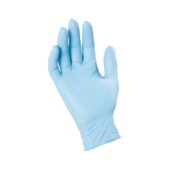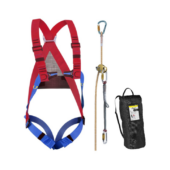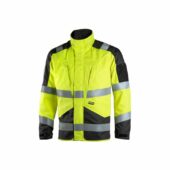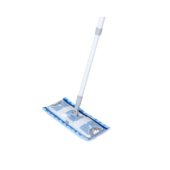When working in warehousing, choosing the right impact-resistant gloves is essential to safeguard your hands against injuries while ensuring comfort and efficiency. In this guide, we break down everything you need to know to make an informed choice. This article is a companion to our comprehensive overview, “Impact-Resistant Gloves: Everything You Need To Know”, which covers the broader aspects of these essential safety tools.
Why Are Impact-Resistant Gloves Crucial for Warehousing?
Warehousing environments involve risks like heavy object handling, machine operations, and potential impacts from tools or falling items. Impact-resistant gloves, also referred to as impact protection gloves or shock-absorbing gloves, provide essential protection against workplace hazards. By minimizing the chances of injuries like bruises, cuts, or impacts, these gloves help workers maintain safety and confidence during tasks.
Key Features to Look For in Impact-Resistant Gloves

Selecting the perfect pair of gloves requires evaluating specific features tailored to warehousing tasks. Here’s what you should consider:
1. Back-of-Hand Protection
The primary function of impact-resistant gloves is back-of-hand protection, which shields against blows and impacts from falling objects. Look for:
- Thermoplastic Rubber (TPR) or similar materials for protection.
- Flexible designs that maintain hand dexterity.
- Compliance with standards such as EN 388:2016, which measures impact resistance. Learn more about EN Standards from this guide in Wikipedia.
2. Grip and Dexterity
In warehousing, handling packages and tools efficiently depends on your grip, which is crucial for productivity and safety. Choose gloves that feature:
- Textured palms to ensure a firm and secure hold on boxes, tools, or other items, even in slippery or dusty environments.
- Durable materials such as nitrile or silicone-coated surfaces, which provide superior grip and resistance to wear and tear during repetitive tasks.
3. Comfort and Fit
Ill-fitting gloves can significantly hinder both productivity and safety, especially during long shifts in a warehouse. To ensure maximum comfort and efficiency, make sure your gloves:
- Match your hand size (see the sizing chart below). Proper sizing minimizes discomfort and allows for natural hand movements during repetitive tasks.
- Are lightweight yet durable, so you can wear them for extended periods without strain or fatigue.
- Feature breathable fabrics, which are essential for preventing sweat build-up and maintaining comfort in hot or humid warehouse conditions. This also reduces the likelihood of skin irritation or chafing.
| European Glove Size | Hand Circumference (cm) | Hand Length (cm) |
| 7 (Small) | 17.5 – 20.5 | 17.5 – 19.5 |
| 8 (Medium) | 20.5 – 23.5 | 19.5 – 21.5 |
| 9 (Large) | 23.5 – 26.5 | 21.5 – 23.5 |
| 10 (X-Large) | 26.5 – 29.5 | 23.5 – 25.5 |
4. Durability and Materials
Warehouse work demands gloves that can endure constant wear and tear, ensuring they remain functional and protective over time. Here’s what to prioritize:
- High-quality synthetic materials like Kevlar or reinforced leather, which provide exceptional resistance to cuts, abrasions, and tears, making them ideal for demanding tasks such as heavy lifting and handling sharp-edged materials.
- Abrasion-resistant coatings, such as polyurethane or nitrile, to extend the lifespan of the gloves. These coatings are particularly effective in preventing wear from frequent contact with rough surfaces, ensuring a secure grip and durability in tough environments.
- Materials that offer resistance to chemical exposure, which can be essential in warehouses where cleaning agents, lubricants, or other industrial substances are present.
Special Considerations for Warehousing
Temperature Resistance
Warehouses may have varying temperatures, from cold storage to heated environments. Choose gloves designed for the specific temperature conditions you’ll face.
Compatibility with Anti-Vibration Features
If your tasks involve power tools, consider anti-vibration gloves as an alternative or complement. Read more in “How To Choose The Right Anti-Vibration Gloves – A Buyer’s Guide”.
Impact-Resistant Gloves vs. Other Work Gloves
Different gloves serve different purposes. Here’s a quick comparison of impact-resistant gloves with related types:
| Type of Glove | Primary Purpose | Ideal Use |
| Impact-Resistant Gloves | Protection against impacts and abrasions | General warehousing tasks |
| Cut-Resistant Gloves | Preventing cuts and punctures | Handling sharp objects |
| Anti-Vibration Gloves | Reducing vibration-related injuries | Using vibrating machinery |
For further information, explore “How To Choose Cut-Resistant Gloves – A Buyer’s Guide”.
Choosing the Right Fit
The right fit ensures maximum protection and comfort. Follow these steps to determine your size:
- Measure your hand circumference at the widest point (excluding the thumb).
- Refer to the sizing chart provided above.
- Test gloves for dexterity by performing common tasks like gripping tools or boxes.
Top Recommendations for Warehousing
When browsing options, focus on products specifically designed for warehouse environments. Visit our Impact-Resistant Gloves category for high-quality options that meet these requirements.
Related Protective Equipment
To maximize safety, consider pairing your gloves with other essential protective gear, such as:
- Cut-Resistant Gloves for tasks involving sharp objects. Explore more here.
- Safety Shoes to protect your feet from heavy impacts. Learn more here.
Maintenance Tips for Longevity
Prolong the life of your gloves with these care tips:
- Clean regularly using mild soap and water.
- Store in a cool, dry place to prevent material degradation.
- Inspect for wear and replace when padding or protection diminishes.
Final Words
We hope this guide has been helpful in navigating the essential factors for choosing the best impact-resistant gloves, from material durability to comfort and fit. Whether you’re handling heavy loads in a busy warehouse or operating machinery in challenging environments, we’re here to support your safety and performance.
Explore the full range of impact-resistant gloves at Droppe, where trusted brands like Mechanix, Carhartt, and Ironclad are just a click away. For more detailed information, explore the main article on impact-resistant gloves.
Have any questions or need advice on selecting the right gloves? Don’t hesitate to reach out – we’re always here to help ensure you make the best choice for your warehousing needs.
– The Droppe Team
Frequently Asked Questions
Yes, impact-resistant gloves can be used for outdoor warehousing tasks. When working in environments exposed to the elements, it’s essential to choose gloves with additional weather resistance, such as those with waterproof or water-resistant coatings, to protect your hands from the elements while maintaining their protective features.
The lifespan of impact-resistant gloves depends on the materials, frequency of use, and the conditions of your warehouse. Typically, gloves made from durable materials like Kevlar or reinforced leather can last several months to a year with proper care. However, regular inspections for wear and tear are essential to ensure continued protection.
Yes, impact-resistant gloves can be worn with additional protective gear like wrist supports or elbow pads. Just ensure the gloves fit properly and do not interfere with the use of other safety equipment. Wearing full protective gear can enhance overall safety, especially when handling heavy objects or performing high-impact tasks.
Yes, there are impact-resistant gloves designed to provide both impact protection and chemical resistance. These gloves often feature specialized coatings or materials, such as nitrile or PVC, which offer protection against chemical exposure while still providing the necessary impact resistance for warehouse tasks.
Yes, most impact-resistant gloves can be washed, but it’s essential to follow the manufacturer’s instructions. Typically, hand-washing with mild soap and warm water is recommended. Avoid using harsh chemicals or putting the gloves in a dryer, as these can damage the materials. Ensure the gloves are fully dried before using them again to maintain their protective qualities.

















